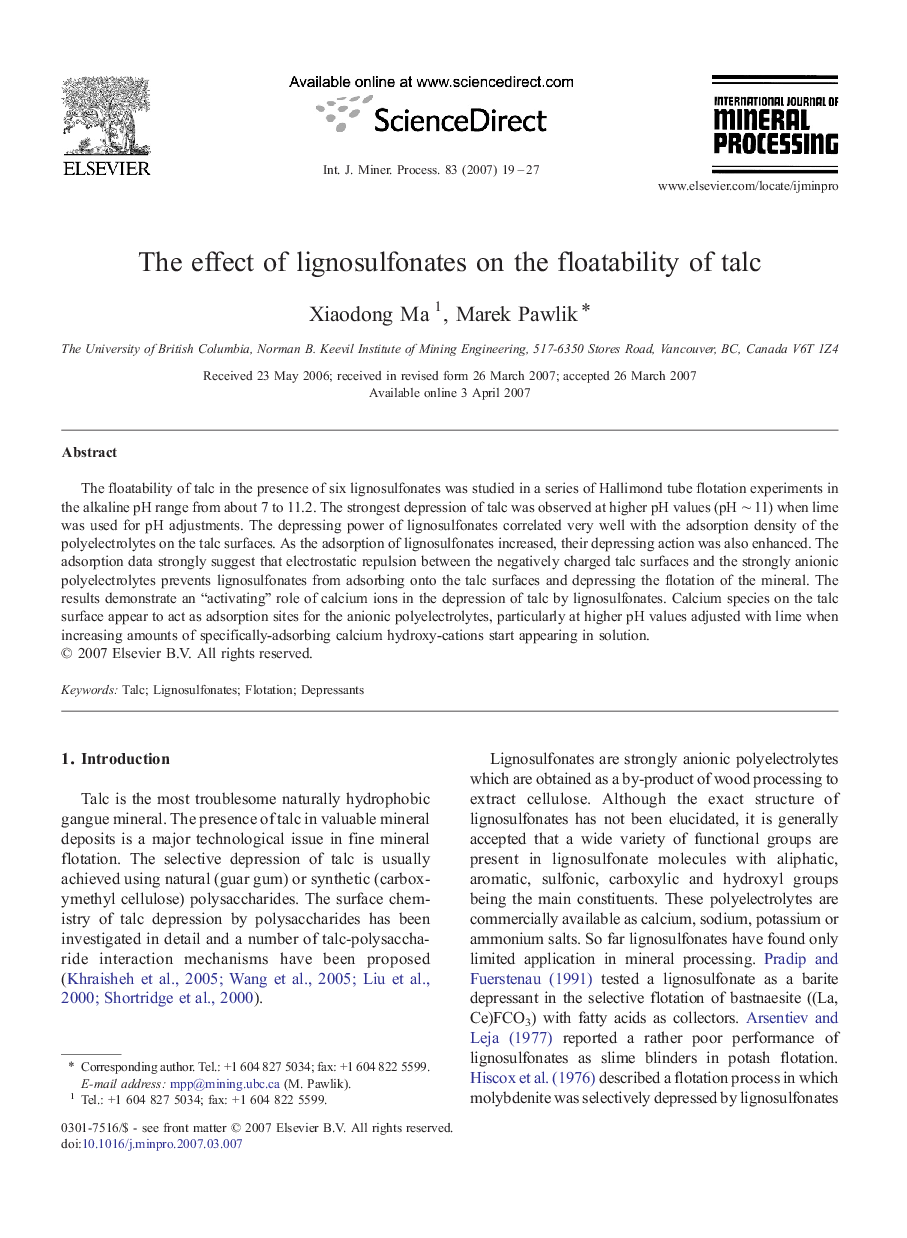| Article ID | Journal | Published Year | Pages | File Type |
|---|---|---|---|---|
| 214533 | International Journal of Mineral Processing | 2007 | 9 Pages |
The floatability of talc in the presence of six lignosulfonates was studied in a series of Hallimond tube flotation experiments in the alkaline pH range from about 7 to 11.2. The strongest depression of talc was observed at higher pH values (pH ∼ 11) when lime was used for pH adjustments. The depressing power of lignosulfonates correlated very well with the adsorption density of the polyelectrolytes on the talc surfaces. As the adsorption of lignosulfonates increased, their depressing action was also enhanced. The adsorption data strongly suggest that electrostatic repulsion between the negatively charged talc surfaces and the strongly anionic polyelectrolytes prevents lignosulfonates from adsorbing onto the talc surfaces and depressing the flotation of the mineral. The results demonstrate an “activating” role of calcium ions in the depression of talc by lignosulfonates. Calcium species on the talc surface appear to act as adsorption sites for the anionic polyelectrolytes, particularly at higher pH values adjusted with lime when increasing amounts of specifically-adsorbing calcium hydroxy-cations start appearing in solution.
